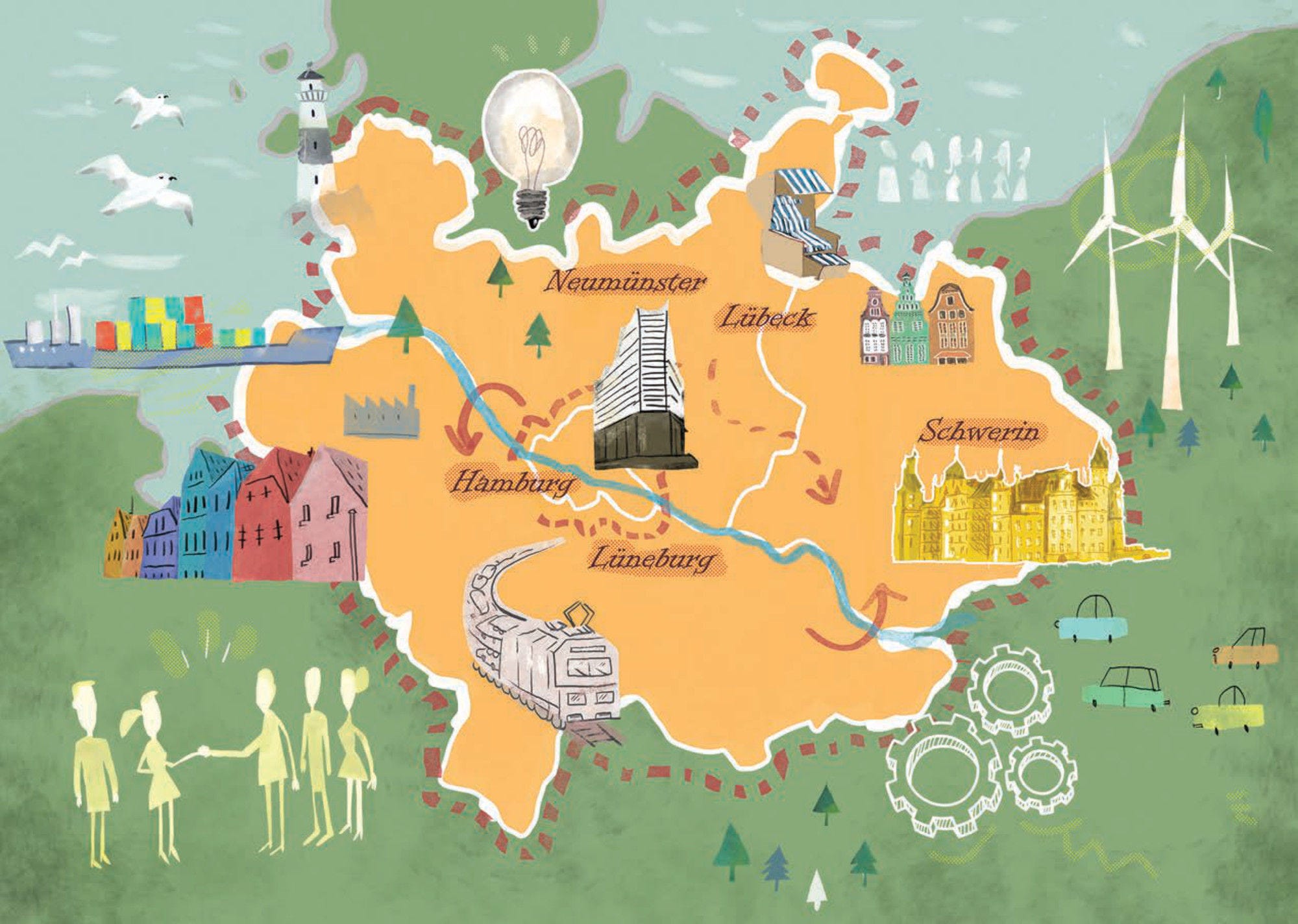The OECD Territorial Review of the Brussels-Capital Region, Belgium, provides an in-depth assessment of the trends, challenges and opportunities for sustainable and inclusive urban development in the region. It aims to help tackle the so-called ‘Brussels paradox’ between a highly performing region in terms of economic wealth creation and competitiveness but relatively poor social conditions. The region is also grappling with a shortage of affordable and quality housing, as well as several mobility challenges, including a high reliance on individual cars and traffic congestion, resulting in high commuting times and pollution levels, despite good accessibility to public transport. Although a comprehensive urban and land-use planning system exists, there is a lack of co-ordination with the surrounding regions and municipalities to drive more effective policies on housing, mobility, and other infrastructure investments. This review also examines the governance and institutional framework and suggests policy actions to strengthen co-ordination and co-operation mechanisms, and promote incremental collaboration at the metropolitan level. Finally, the review provides recommendations to enhance public finances in the region, focusing on better compensating for its additional charges, co-ordinating public investment among levels of government more efficiently, and establishing a metropolitan fund.
OECD Territorial Reviews: Brussels-Capital Region, Belgium

Abstract
Executive Summary
Key findings
An attractive and productive region
Although endowed with the smallest surface area and population size among the three regions making up the federation of Belgium, the Brussels-Capital Region enjoys a dynamic demography and a competitive economy. Home to 1.24 million people (10.6% of Belgium’s population) living in 19 municipalities including the City of Brussels, the region has grown rapidly (by 22% in 2005-22, compared to about 8-9% in the Territorial Level 2 [TL2] regions of Berlin [Germany] and Paris [France] for example). This growth has been primarily fuelled by international migration: in 2022, 53% of the region’s working-age population was foreign-born. The region is also relatively young: at 27.9% in 2022, its young-age dependency (people aged 15 or younger as a percentage of people aged 15-64) was one of the highest among all OECD TL2 regions, much higher than in Vienna, Austria (21.0%) or Hamburg, Germany (21.5%), for instance.
The Brussels-Capital Region is Belgium’s most urbanised region, with the second highest population density among all OECD TL2 regions (7 500 inhabitants per square kilometre). Almost three-quarters of its territory is built up, which is the highest proportion of all OECD TL2 regions. However, the functional urban area (FUA) of Brussels – capturing the geography of where people live and commute to work – extends well into parts of the neighbouring Flemish and Walloon Regions, encompassing some 3.34 million people (28.6% of Belgium’s population) distributed across 137 municipalities. When considering this scale, only 30.7% of the FUA of Brussels is built up, which is lower than in many other FUAs in OECD countries (e.g. 44.8% in the FUA of Berlin, 51.4% in Vienna, and 61.7% in Paris).
With a highly tertiarised economy (93% of jobs were in the service sector in 2020), the Brussels-Capital Region generates almost one-fifth (18%) of the national GDP and boasts one of the highest levels of GDP per capita among all OECD TL2 regions. The FUA also accounted for more than a third of the national GDP (36.8%) in 2019 (the latest year for which data are available at the FUA level), compared to 32.1% for Paris and 28.6% for London, United Kingdom. In 2020, the Brussels-Capital Region’s labour productivity per worker surpassed the national average by about 25% and ranked among the highest in all OECD TL2 regions.
A region struggling to keep pace with housing and mobility demand
However, the high level of wealth produced in the Brussels-Capital Region (measured as GDP per capita) is inflated by the high share (about half) of workers living outside the region. At around USD 22 000 on average, household disposable income is much lower than GDP per capita in the Brussels-Capital Region and indeed lower than average household disposable income in Île-de-France, France (USD 26 800) and Greater London, United Kingdom (USD 34 600). There are also large inequalities within the region, with median annual taxable incomes varying significantly between the municipalities, from around EUR 16 200 in Saint-Josse-ten-Noode/Sint-Joost-ten-Node in 2019 to around EUR 26 800 in Woluwe-Saint-Pierre/Sint-Pieters-Woluwe (i.e. 1.7 times more). Neighbourhoods in the south and east of the region are home to the wealthiest households of the region, while neighbourhoods near the canal and its industrial zone (the so-called “croissant pauvre/arme sikkel”) concentrate the most precarious inhabitants.
The region is confronted with an acute housing crisis. Real median prices of apartments almost tripled between 1996 and 2020, increasing by 170%. This represents a much faster rise than the OECD average, where real house prices increased by just under 50% over the same period but still lower than in some other regions, such as Île-de-France, where prices more than quadrupled. Moreover, despite the significant increase in population, the number of social housing units has remained broadly stable since 2005, whereas the number of households on the waiting list for social housing more than doubled, surging from around 21 000 in 2005 to almost 50 000 in 2023 (i.e. 8.8% of households in the Brussels-Capital Region are waiting for a social dwelling). The region has adopted a housing and urban revitalisation strategy and offered incentives for the private sector to build more affordable housing. However, persistent barriers, such as a complex procedure to obtain permits and insufficient funding, hamper regional efforts to ramp up the housing supply.
In line with its vision to promote a “city of proximity”, the Brussels-Capital Region has developed a comprehensive mobility plan (Good Move) in addition to municipal mobility plans and the FUA offers one of the highest levels of accessibility to public transport in the OECD (95% of the population live within 10 minutes of a subway/bus/tram stop). However, more than half (52.7%) of commuters entering the Brussels-Capital Region and almost three-quarters (73.3%) of residents commuting from the Brussels-Capital Region use their car. Residents of the Brussels-Capital Region completed almost 30% (27.3%) of their trips by car between October 2021 and October 2022, a lower share than walking (36%) but still above public transport (22%) and other modes (around 14%). This is partly due to a tax system that favours company cars, often used by employers as a method of remuneration to alleviate workers’ income tax and to recover part of the value-added tax paid on expenses related to company cars, and by employees to partially avoid paying social security contributions. It is also due to the fragmentation of regional and municipal actors managing public transport, making it difficult to match urban form with mobility planning at the metropolitan scale. Even at the municipal scale, according to data and analytics provider INRIX, the City of Brussels is one of the most congested cities in the world, ranking 17th among almost 1 000 cities, with 98 hours lost in traffic on average in 2022 (faring better than London where residents lost on average 156 hours in traffic but worse than Mexico City, Mexico, at 74 hours). While greenhouse gas emissions per capita dropped by around 32% between 1990 and 2020, air pollution in the region remains high, with levels of exposure to PM2.5 well above the 5 micrograms per cubic metre limit recommended by the World Health Organization.
A region amidst a complex governance landscape and strained public finances
While on paper, the Brussels-Capital Region manages an extensive range of competencies, in practice, most of them are shared with other levels of government, especially municipalities, and the allocation of responsibilities among the multiplicity of actors often remains unclear. The fact that the Brussels-Capital Region is the only bilingual region in Belgium and some institutional compromises were made to accommodate this specificity in its parliament adds even more complexity.
In parallel, the relevance of more effective policy co-ordination and implementation at the metropolitan scale is widely recognised but the corresponding governance body (a metropolitan community, included in the legal agreement of the Sixth State Reform adopted in 2014) has never translated into reality and there is a lack of metropolitan land use planning. Planning documents mostly focus on setting rules to guide and authorise construction and they are not supplemented with incentives to manage density, particularly in taxation.
Although various governance arrangements have been established to foster collaboration among different levels of government and jurisdictions, they face several issues. For example, the Conference of Mayors provides a flexible setting for informal co-ordination but does so outside the legal framework, lacking transparency and accountability. Brulocalis, the association of local institutions, acts as a formal platform for horizontal co-operation but does not necessarily operate with the Conference of Mayors. Vertical co‑operation between the Brussels-Capital Region, the Flemish and Walloon Regions, and the Federal Authority occurs most frequently through agreements. Still, these are not always implemented or monitored and depend on political will. The Concertation Committee serves as an instance where conflicts of interest and competency are discussed but not necessarily resolved.
Finally, the region’s public finances have deteriorated over the last decade. Tax revenue has increased remarkably since the Special Financing Act was modified in 2014, as have expenditure items such as staff costs and transfers to municipalities. Some mechanisms are in place to compensate the Brussels-Capital Region for the specific costs it has to bear (in hosting the Belgian capital and the headquarters of many European institutions) but they may be insufficient once the National Solidarity Mechanism, which transfers approximately EUR 430 million yearly (i.e. 43% of total compensation and equalisation transfers) to the budget of the region, is discontinued in the coming years. With such costs and centrality charges outpacing revenues, direct debt more than doubled between 2016 and 2021 in real terms. The lack of adequate co‑ordination of public investment among levels of government risks leading to duplication and inefficiency. Finally, municipal finances are also grappling with expenditure increases: 10 out of the 19 municipalities have a negative budget balance. Income disparities across municipalities are pronounced as per the Wealth Index, with the southeast municipalities in a more favourable financial position compared to the rest. As a result, municipalities requiring significant revenue for essential public services, such as social allowances through the Public Centres for Social Welfare, face diminished income from the surtax on personal income tax. Although the General Grant to the Municipalities and other subsidies seek to alleviate fiscal inequalities and pressures for service and infrastructure provision, the transfer of additional responsibilities from the federal government to the municipalities was not always accompanied by commensurate funding. This has resulted in certain mandates being underfunded, further complicating the challenging task of restoring budget balances.
Key recommendations
Accelerate the supply of affordable housing where it is most needed, notably by:
Reviewing the planning permit granting procedure to make it more efficient (e.g. concentrating permit procedures at the regional level) and easing regional and municipal land use restrictions that prevent further densification in the FUA through a review of the land use framework (Regional Land Use Plan/Plan Régional d’Affectation du Sol, PRAS).
Support the production of affordable housing (i.e. social housing, affordable rental housing and affordable home ownership) by relaxing the planning and urban rules related to housing, granting identical tax benefits to private investors and developers willing to conduct housing projects similar to those of CityDev (which provides new subsidised housing in the region) on the market.
Complementing affordable housing mandates of municipalities with additional incentives to developers (e.g. minimising development fees, allowing higher densities and greater heights in exchange for more social housing) and meeting the regional government’s goal of building a socially mixed region. Priority should be given to the rental segment of social housing, for example by regulating rental prices and the development of social housing estates that are more evenly distributed across the region.
Strengthening the functions of the current Housing Advisory Council (Conseil Consultatif du Logement, CCL) into a policy formulation body that sets priorities and defines policy options to tackle the housing crisis.
Improve urban accessibility in line with the objective of shaping a compact, connected and sustainable Brussels-Capital Region, notably by:
Encouraging transit-oriented development by aligning housing, transport and land use planning (e.g. building social housing near transport hubs).
Promoting hyper-localisation as part of the Brussels-Capital Region’s “20-minute city” policy (e.g. investing more in orbital systems that connect neighbourhoods rather than focusing only on the urban core).
Exploring new financing models for transport provision (e.g. leveraging land value capture instruments, deploying taxes on vehicle use).
Strengthen land use planning to manage densification and an orderly expansion by:
Using fiscal incentives to steer land through taxation (e.g. land value taxes) or setting a ground lease system.
Fostering the metropolitan dimension of land use planning, and monitoring and evaluating the impact of land use-related regulations on urban development, particularly on housing.
Streamline the region’s multi-level governance system to improve policy coherence and efficiency, notably by:
Clarifying the allocation of responsibilities in greater detail and considering transferring specific competencies from other levels of government to the region (e.g. from the French, Flemish and Joint Community Commissions on education and culture, from the Public Centres for Social Welfare on social welfare allocations, and/or from municipalities on urban planning regulations).
Strengthening existing co-ordination and co-operation mechanisms, for example by formalising the Conference of Mayors and integrating it within the governing structure of Brulocalis, monitoring the implementation of co-operation agreements, encouraging inter-municipal co‑operation to deliver joint services and considering municipal mergers as a tool to strengthen coherence while recognising and assessing pitfalls to avoid.
Fostering incremental collaboration at the metropolitan scale, notably to enhance transport planning at the metropolitan scale, by allowing for policy experimentation, securing the necessary resources (e.g. through a metropolitan fund), designing a system of incentives and compensations for actors participating in collaboration, and implementing a long-term process of monitoring and evaluation to fine-tune policies and boost trust.
Enhance public finances in the Brussels-Capital Region, notably by:
Promoting the organisation of a Federal Conference on the Additional Financing of the Brussels-Capital Region where a long-term compensation system could be designed based on a shared diagnostic and agreed indicators drawn from a hub that would centralise all data on public finance from the different levels of government.
Mobilising further funding for public investment through innovative mechanisms (e.g. earmarked taxes, tax financing instruments) and better co-ordinating public investment, particularly in housing and transport infrastructure (e.g. by empowering the High Council of Finance to act as the main co-ordinating body for public investment).
Bridging fiscal gaps between municipalities through specific modifications to the General Grant to the Municipalities, coupled with an assessment of under- and unfunded mandates and an evaluation of the incentives designed to restore budget balances.
In the same series
Related publications
-
 21 November 2024
21 November 2024 -
30 July 2024












